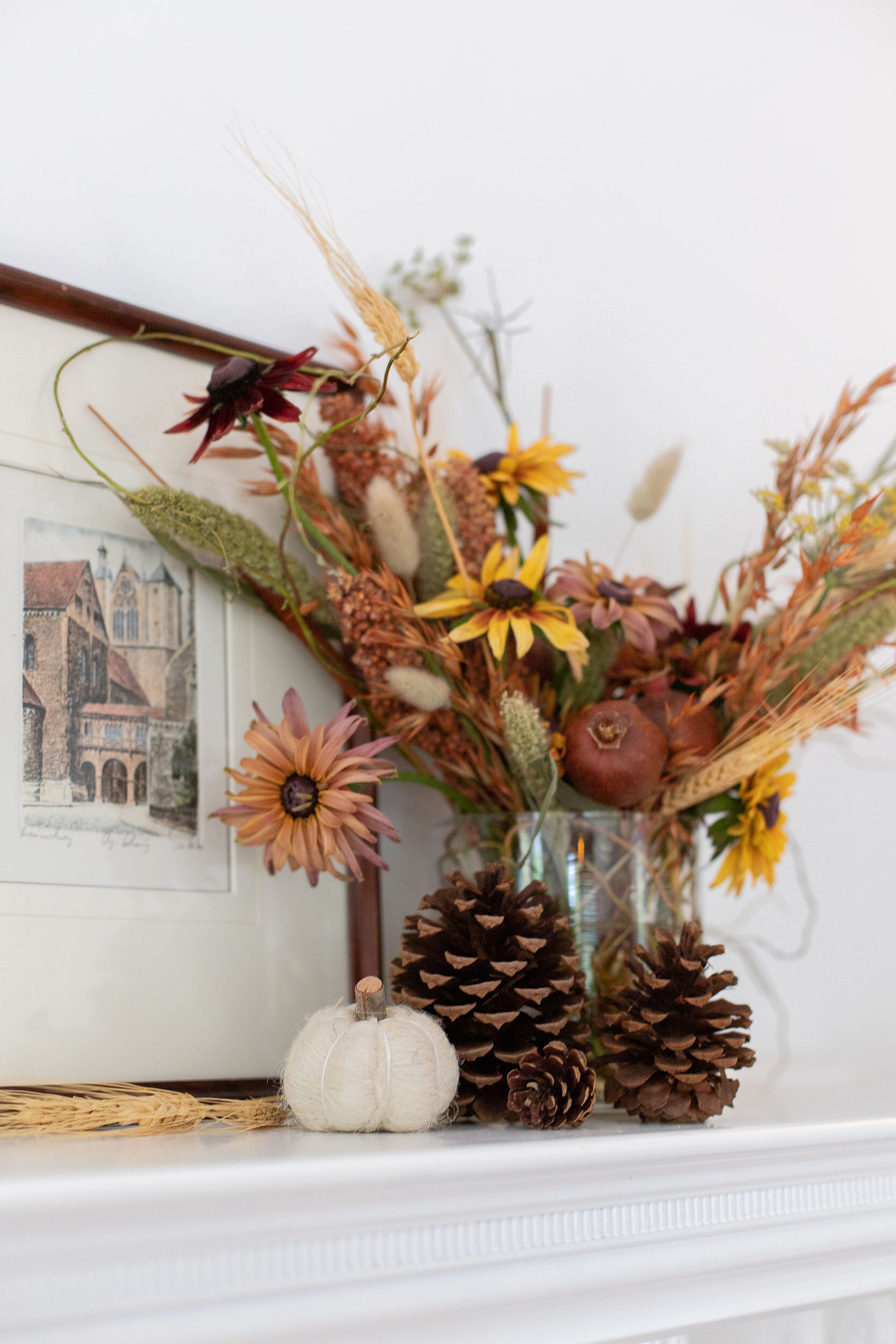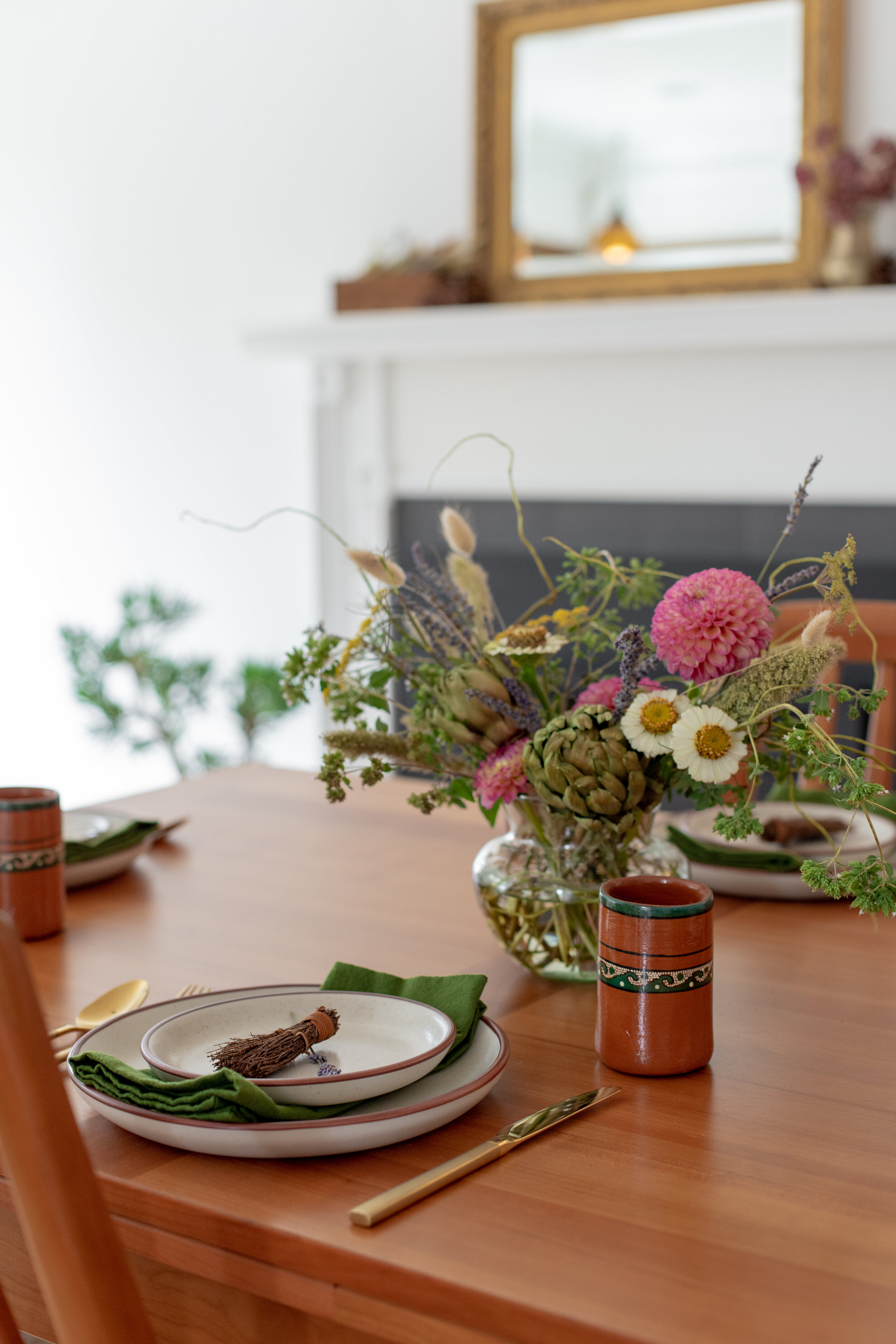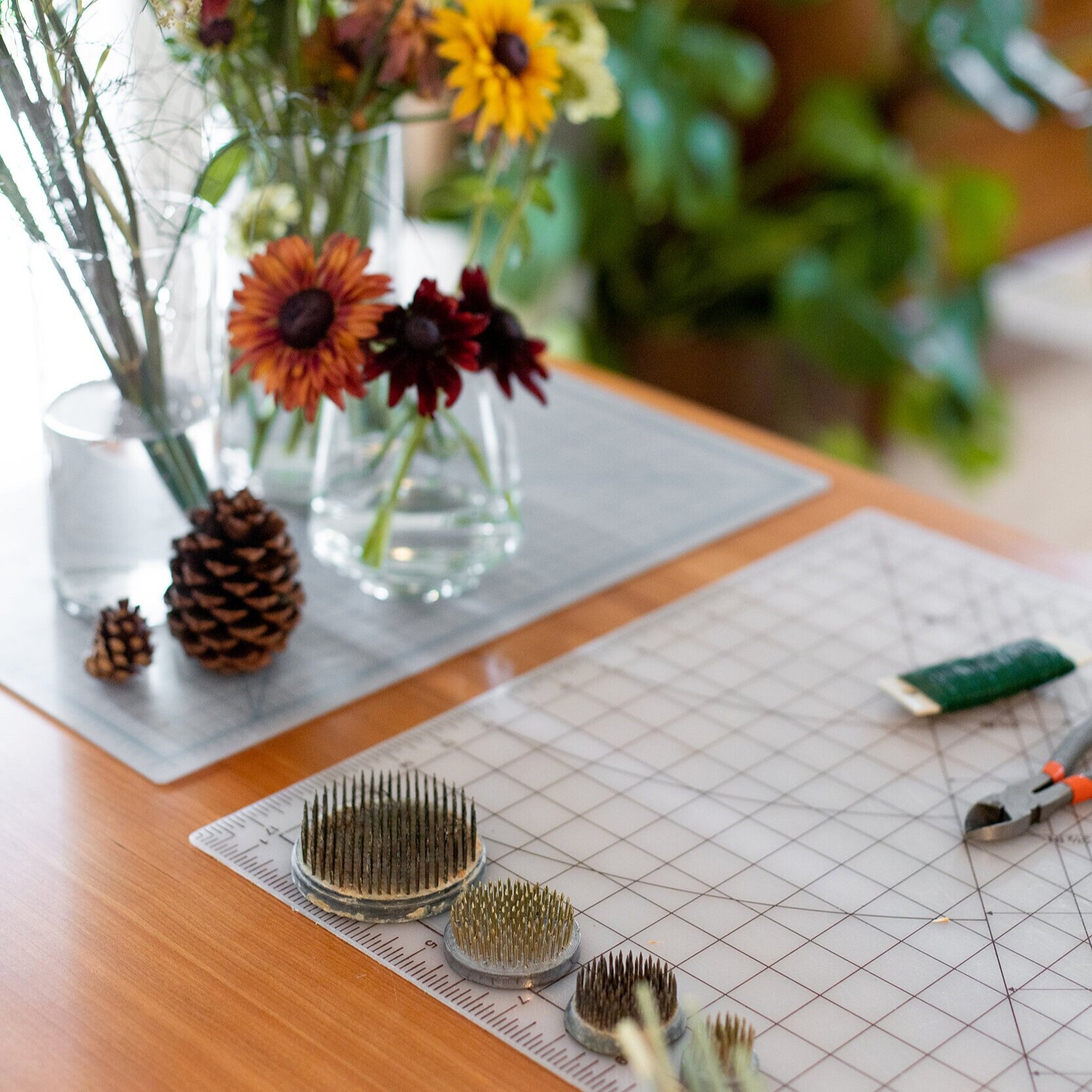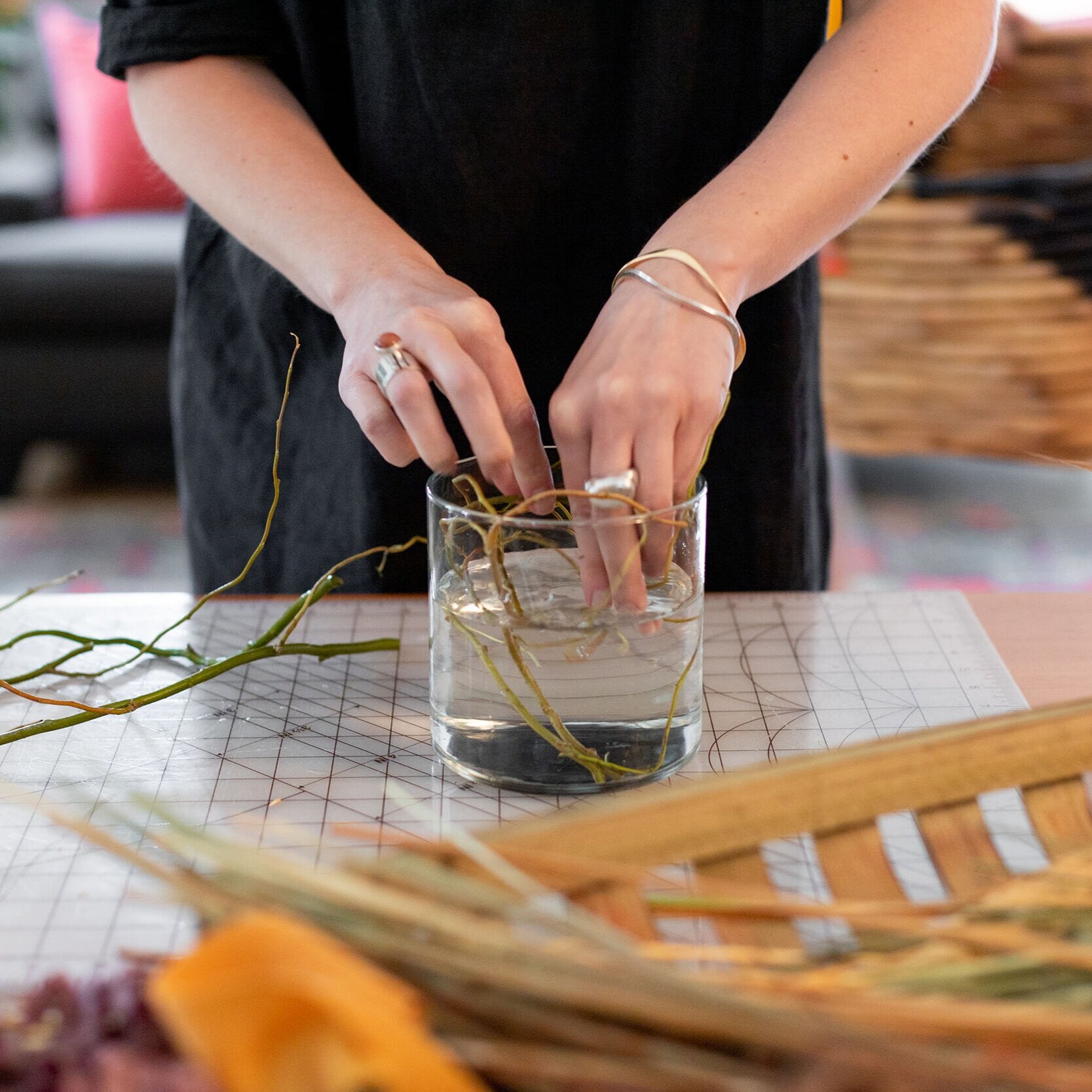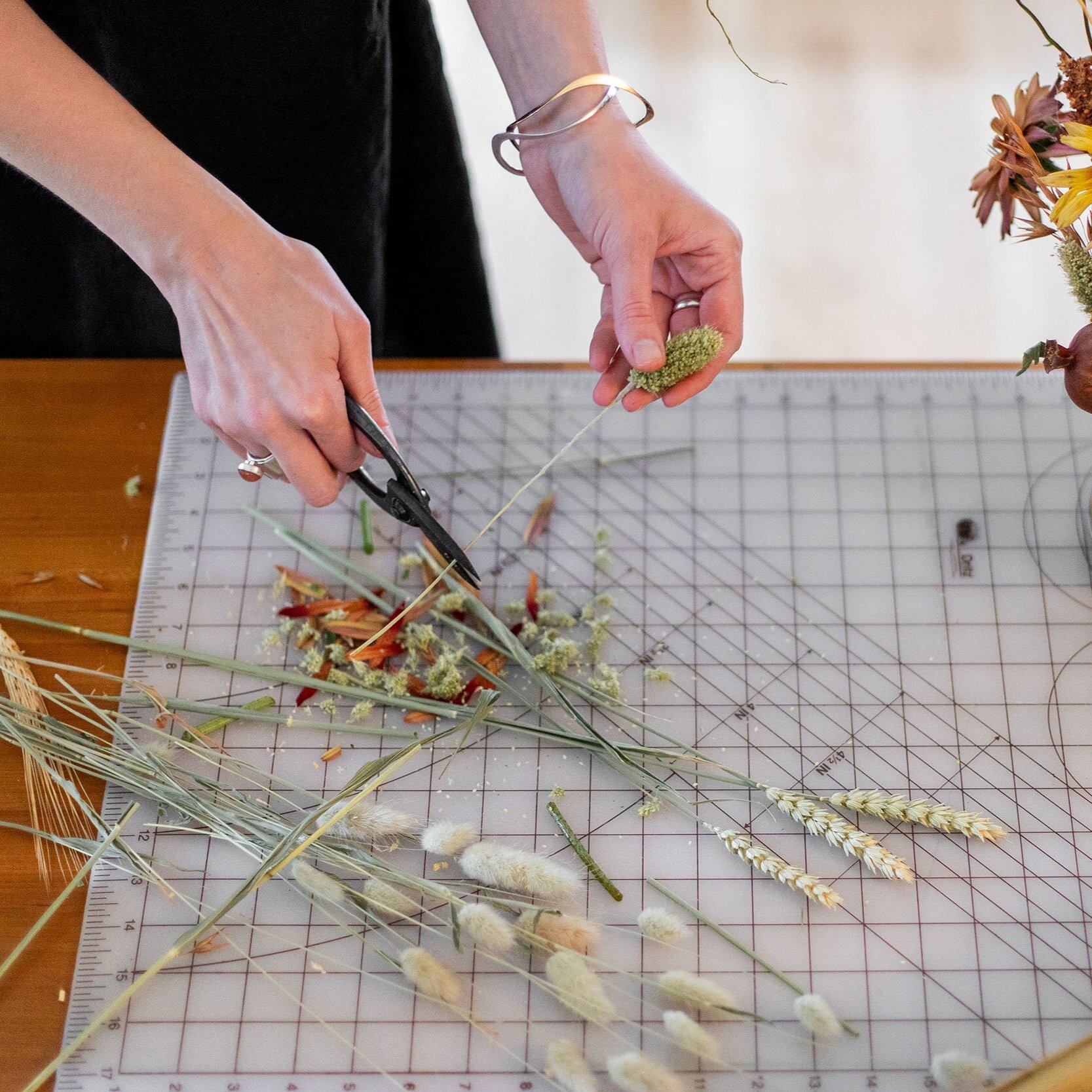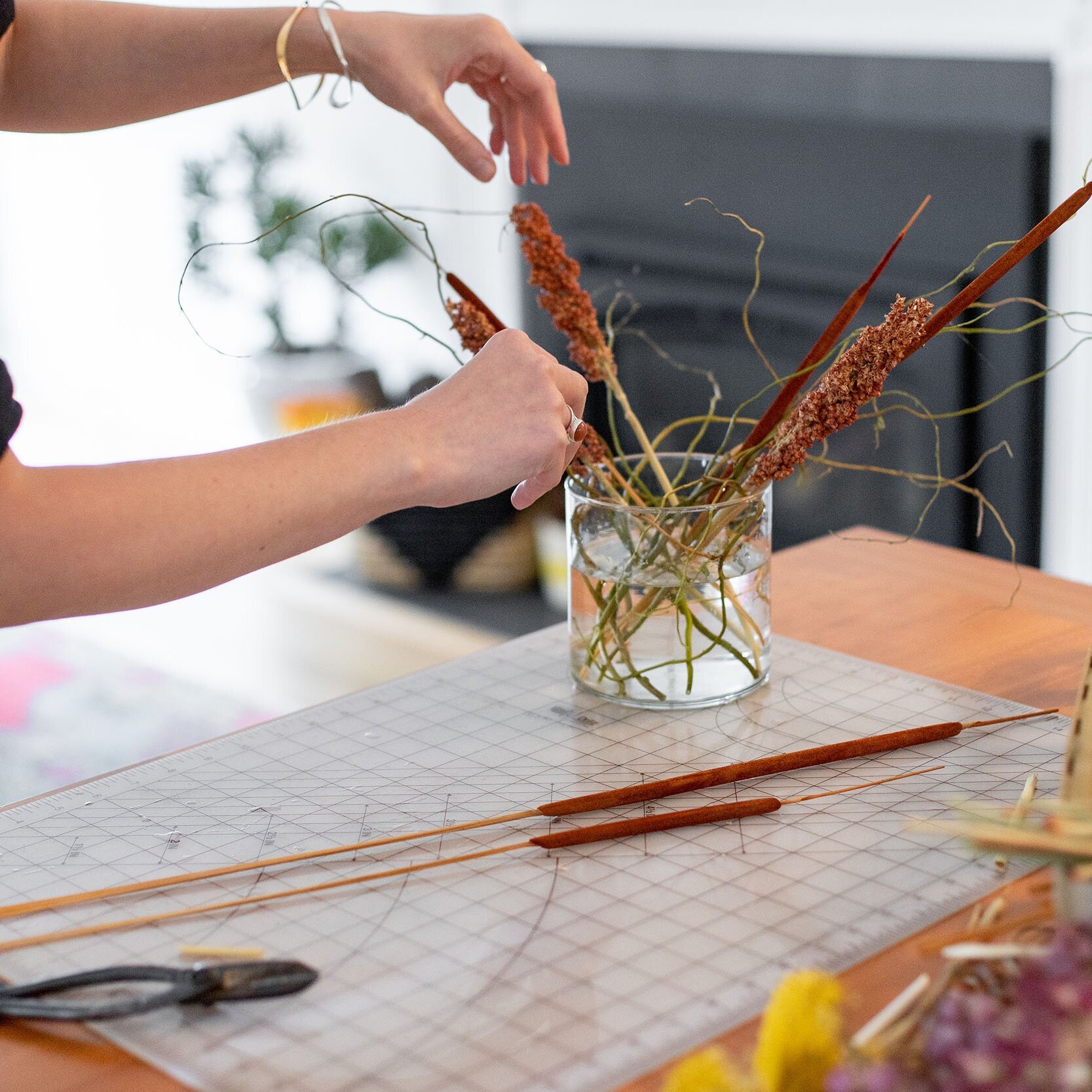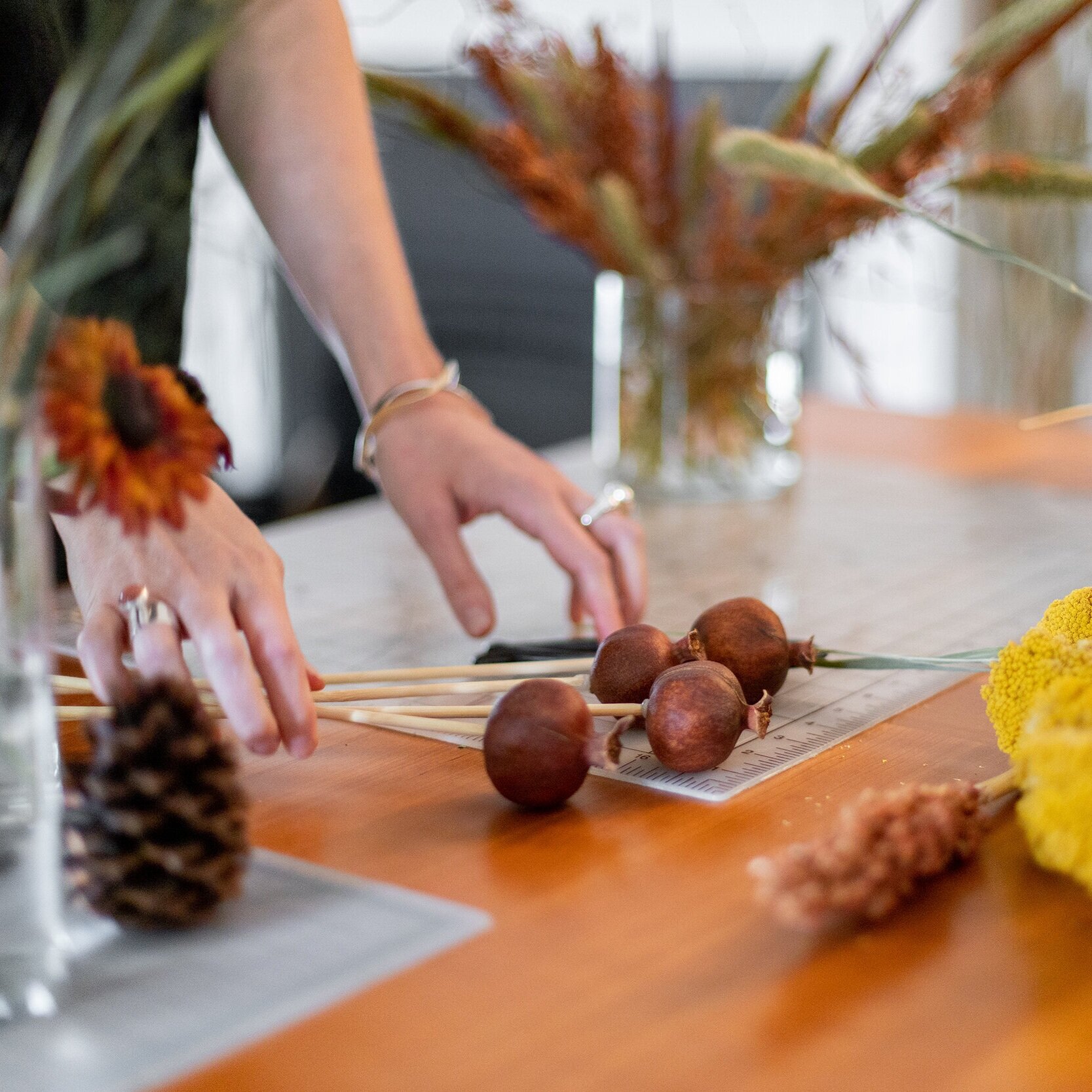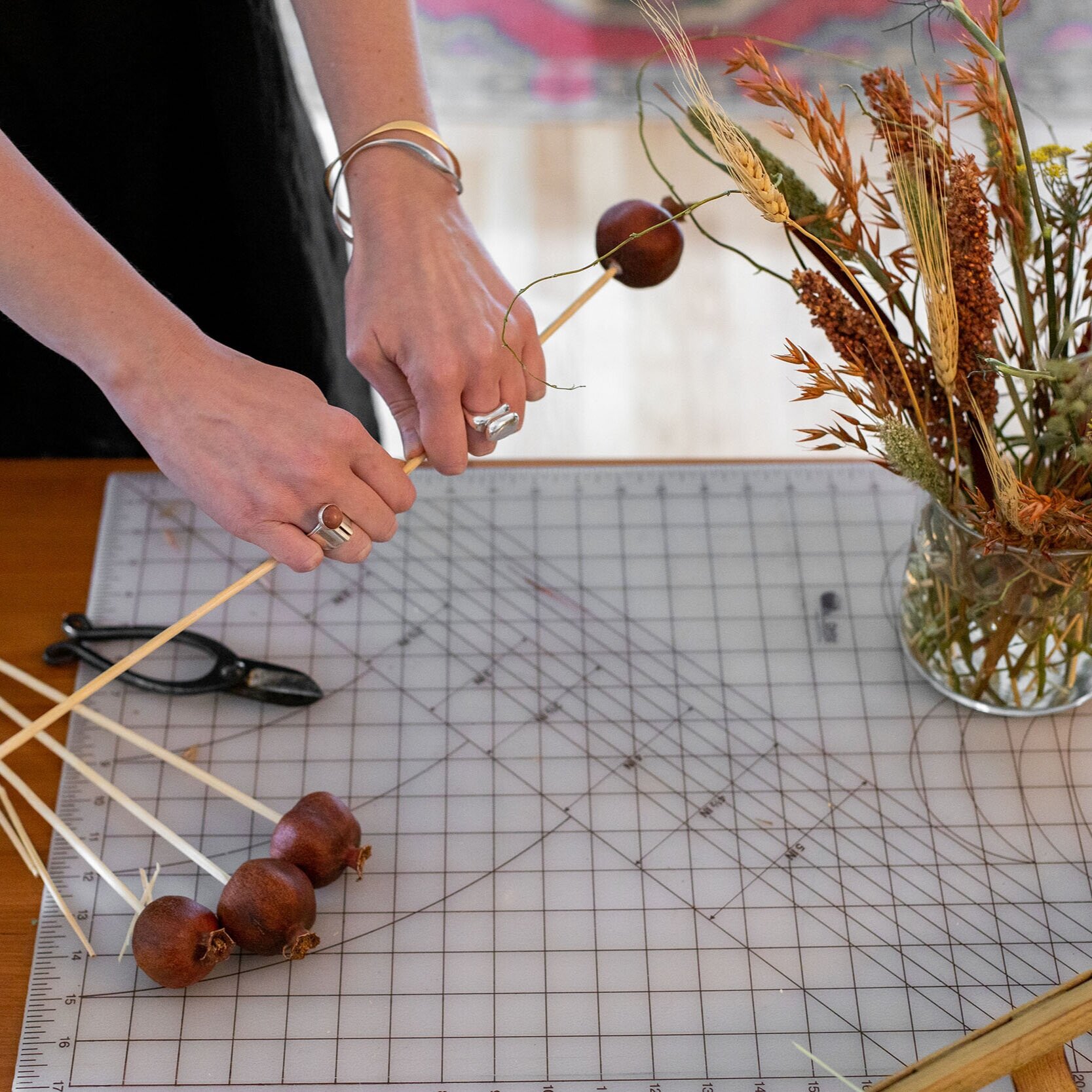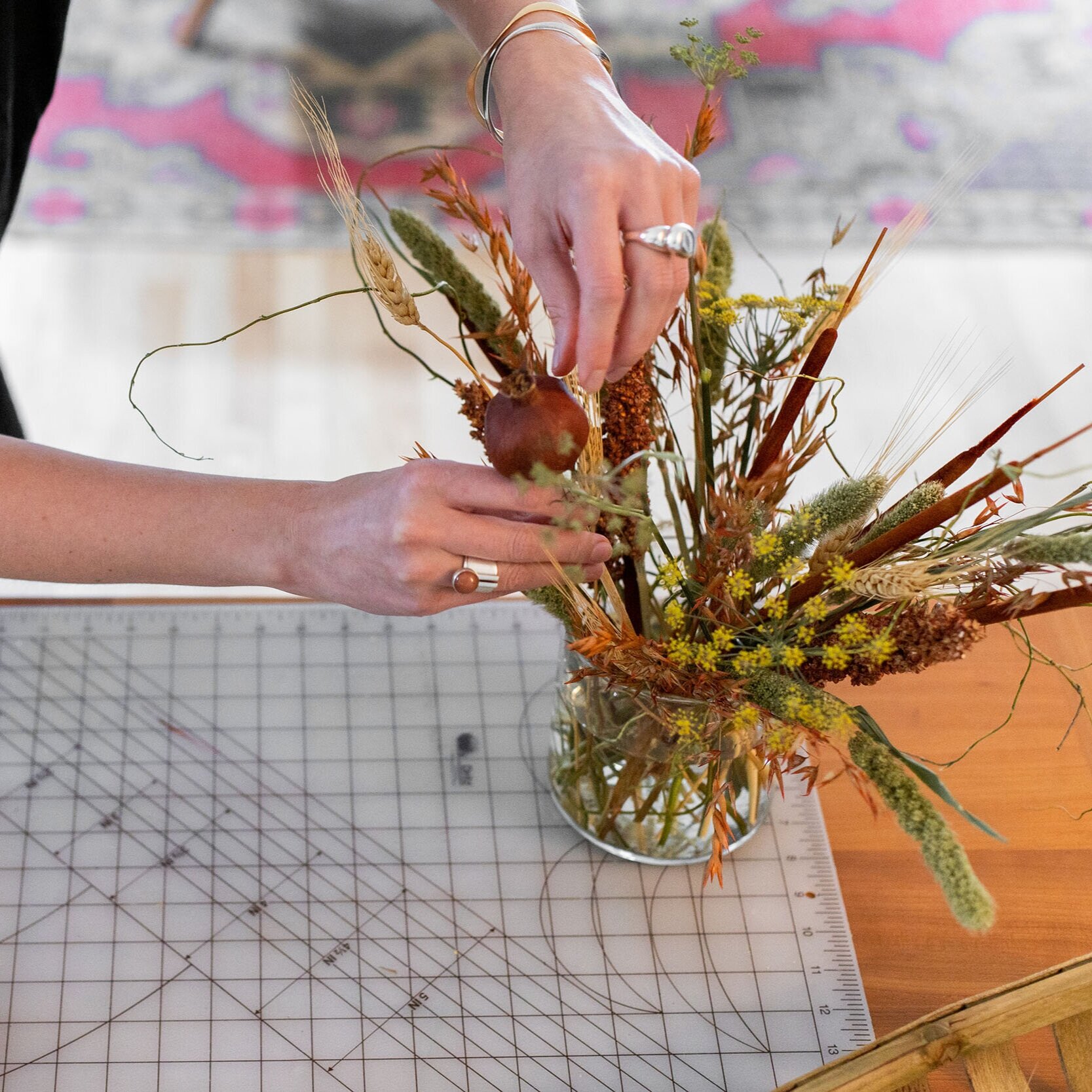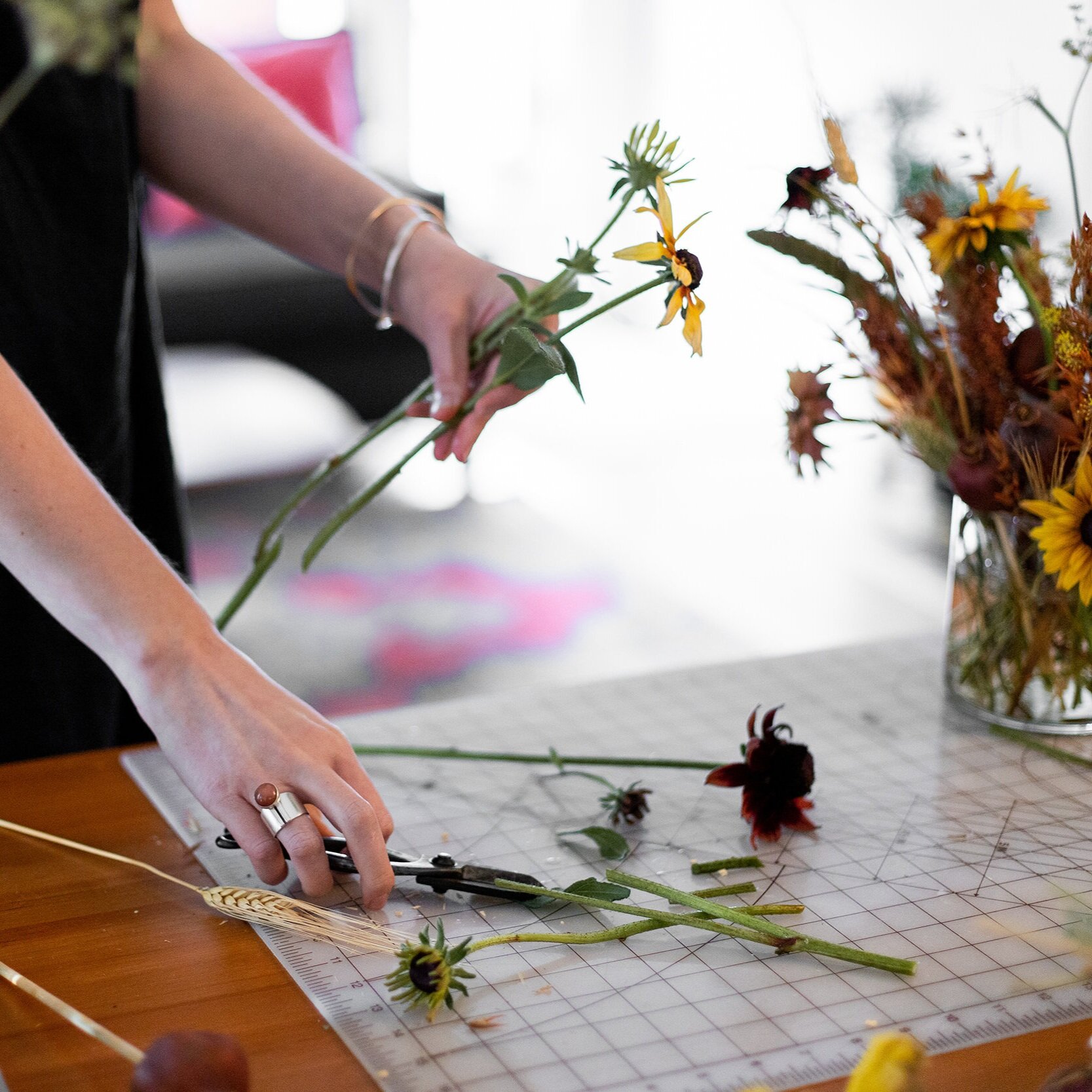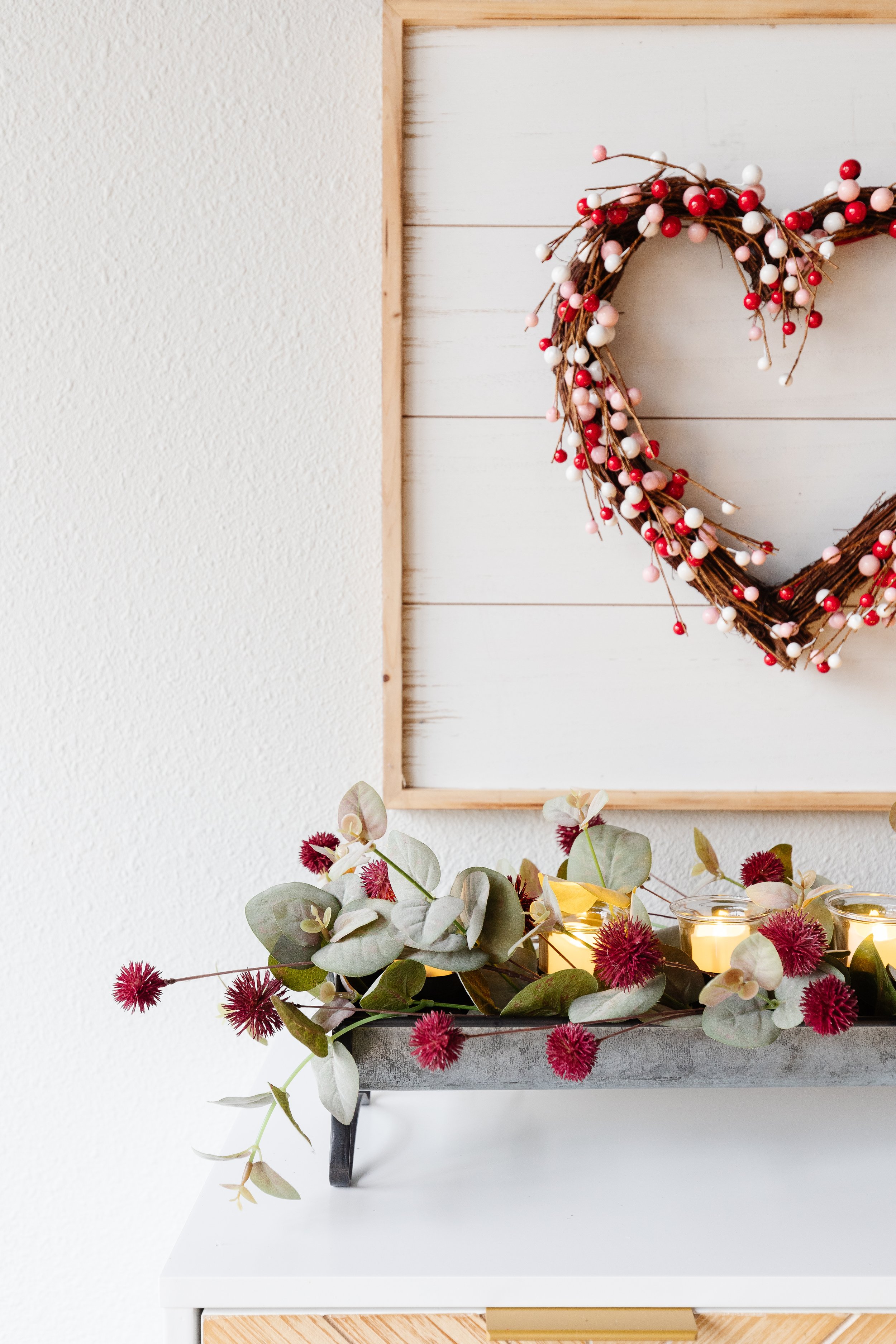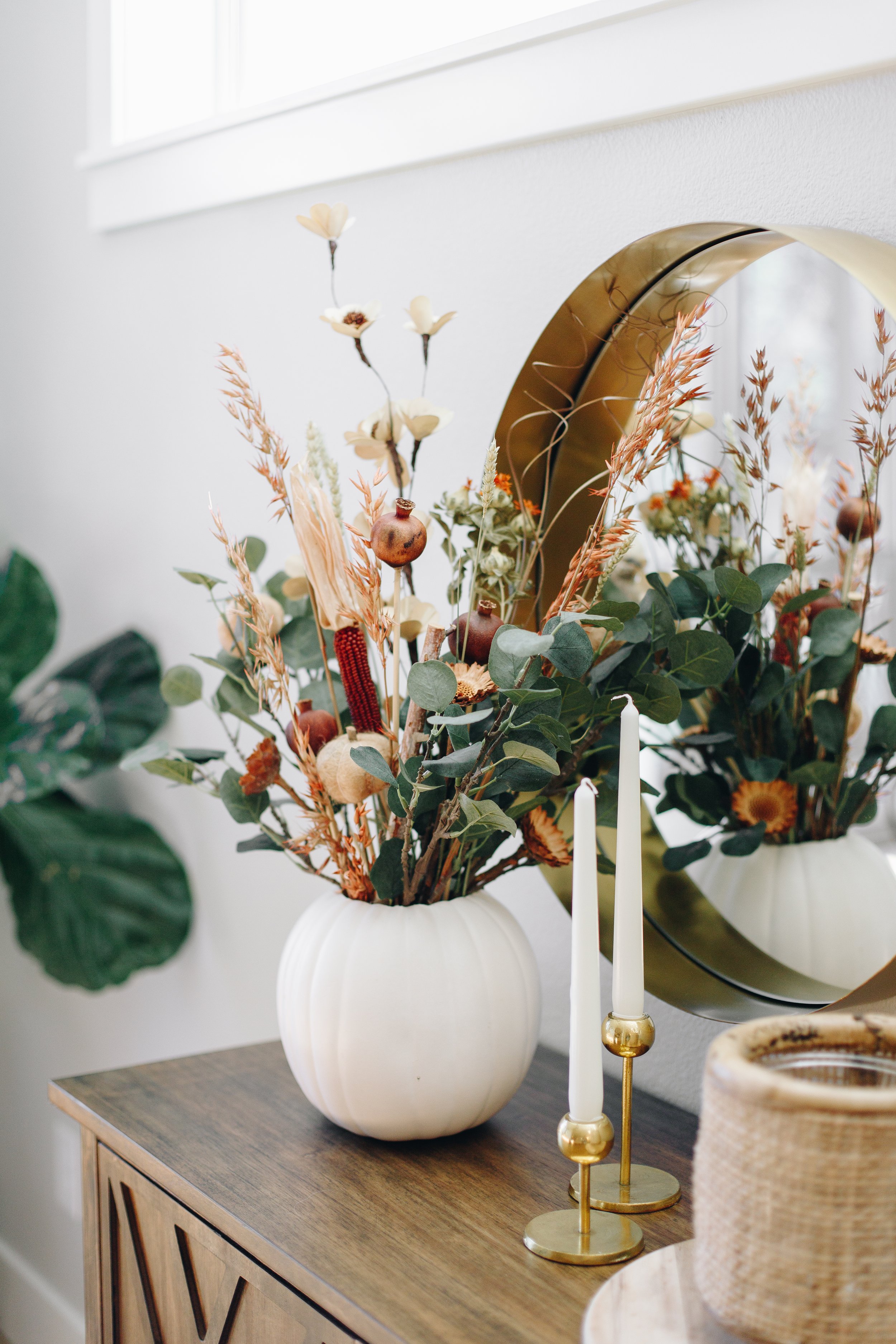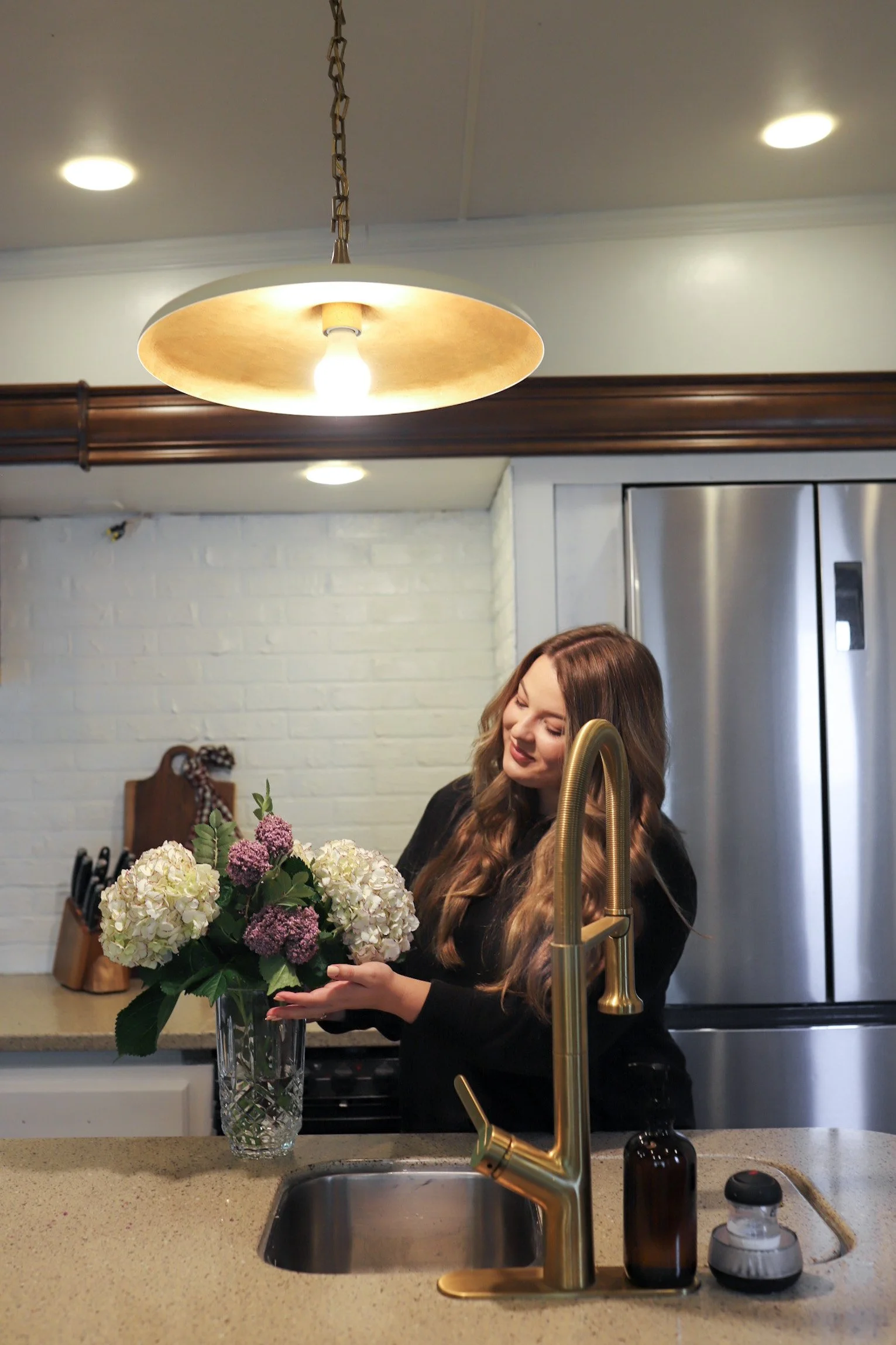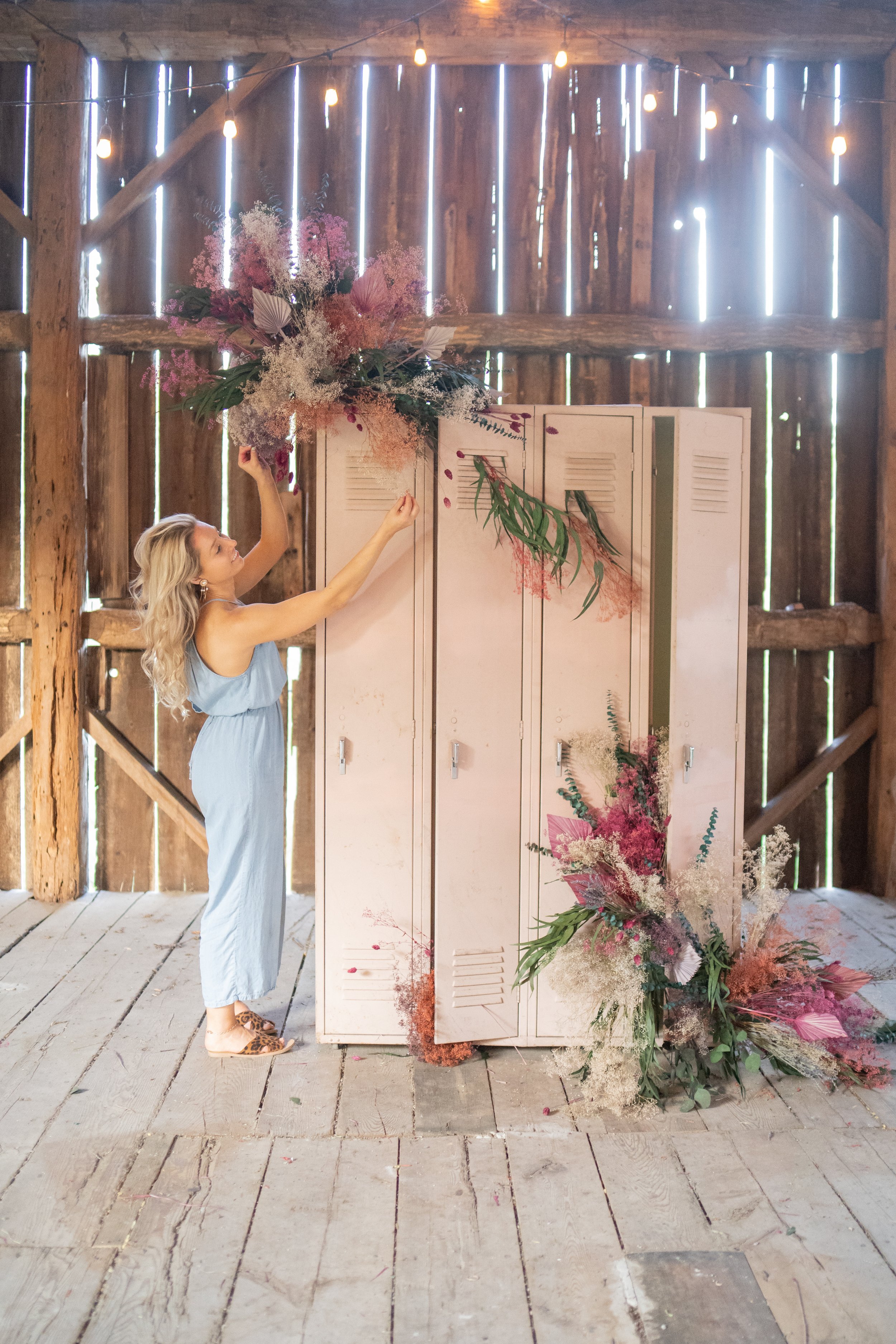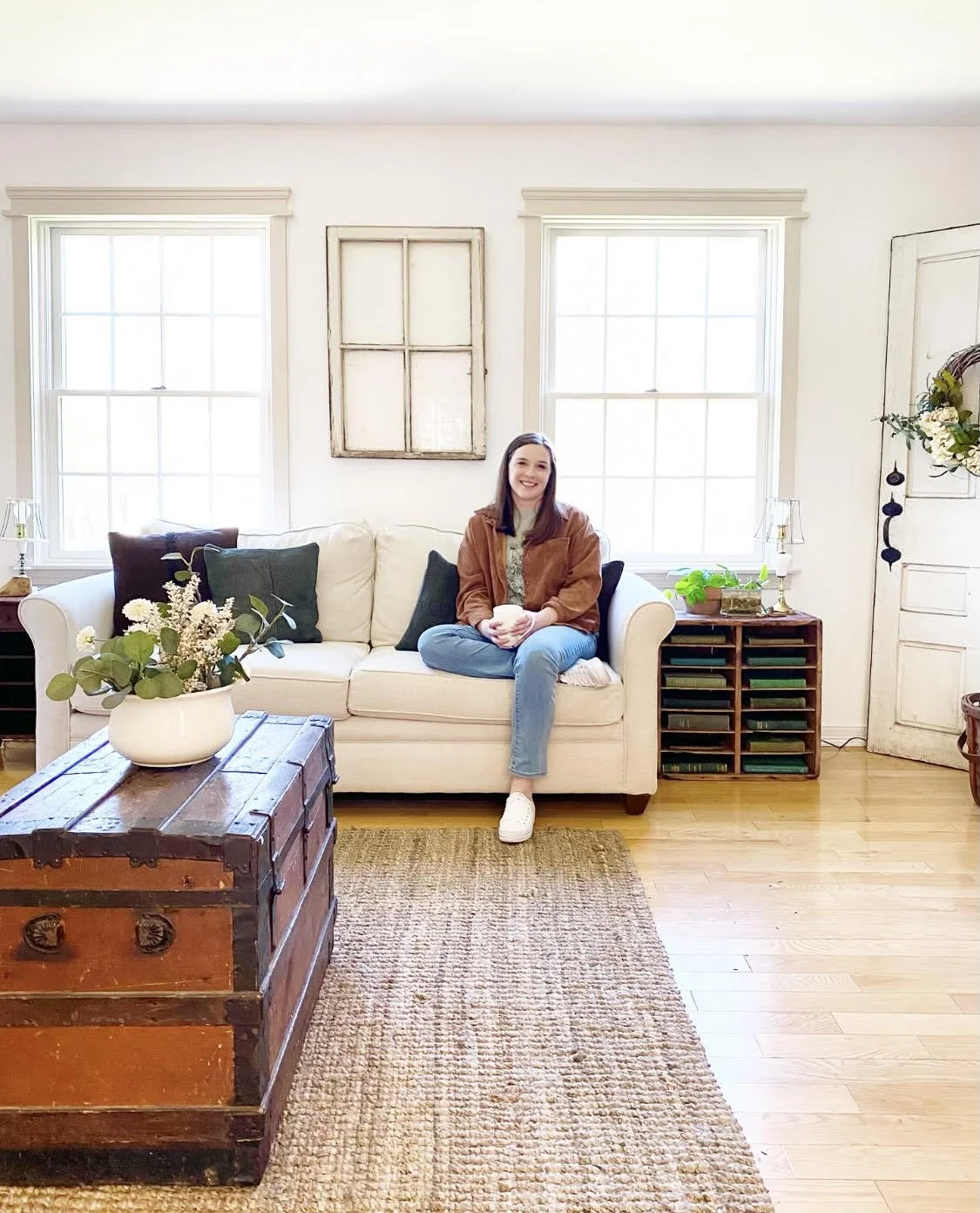How to Arrange Flowers Like a Pro
Giving flowers is a classic way to mark a special occasion, from expressing romantic interest, to Thanksgiving at Grandma’s. Flowers are a go-to gift when you want to show someone you care. They also create beautiful accents and bring a sense of natural warmth and charm to your interior decor, holiday meals, and special events.
Do-it-yourself bouquets are perfect for somebody who loves flower arranging and desires creative control. Does it need to last more than a week? Go for all dried flowers. Have a cat in the home? Skip the oh-so-popular (and poisonous!) lilies. Is a special occasion on the horizon? A personalized bouquet might just be the thing. Use these tips and tricks from the pros to create a custom, unique, and thoughtful floral arrangement.
Two Designs We Arranged
Recreate:
Using the following mix of Bindle & Brass dried naturals and cut flowers purchased from the store, click the links below to purchase them at homedepot.com
Recreate:
Using the following mix of Bindle & Brass dried naturals and cut flowers purchased from the store, click the links below to purchase them at homedepot.com
How to Create Your Own Arrangement
DIY Bouquets
As with all great hobbies, there is a depth to the art of floral arranging that makes it a fulfilling practice for the beginner and advanced florist, alike. With literally hundreds of species of plants to try, endless color schemes to play with, and new techniques being developed all the time, it is possible to be endlessly entertained with creating beautiful floral displays. Studies have shown that the presence of flowers at home can reduce stress levels and improve moods, so it’s no wonder we have enjoyed floral arranging for thousands of years.
Flower arranging is not only a rewarding hobby, it’s a great way to bring natural details into any space. By purchasing the supplies to assemble your own bouquets, particularly when using dried flowers, the cost can be less prohibitive—making DIY floral arranging well worth the investment.
Flower Meanings
As humans, we have a long history with plants, and we have spent a millennia creating folklore and attributing cultural significance to them. Flowers are no exception, and Europeans of the Victorian era couldn't resist developing a complex language and symbology around flowers.
How a particular posey was presented, the colors of the flowers, and the different flora incorporated, communicated things that were otherwise left unspoken: love, virtue, jealousy, and even rejection. And while this “language” of flowers has largely fallen by the wayside, there is still some floral symbology observed today:
Red roses represent romance and a true expression of love.
Yellow flowers represent friendship.
White flowers connote purity and spirituality and are often used around religious holidays or funerals.
Of course, unless gifting flowers to a floriology diehard, there’s no need to stress too much about whether a particular bloom is appropriate for an occasion or not. In most cases, it really is the thought that counts, and the extra care taken to create a bouquet at home will not go unappreciated.
Dried vs. Fresh Flowers
Dried flowers are becoming increasingly popular, and there is no reason not to experiment with these delicate, yet long-lasting, alternatives to fresh stems.
Here are a few compelling reasons why you may want to incorporate dried flora into your custom bouquet:
Lifespan: With optimal care, hydration, and refrigeration, fresh flowers will last up to two weeks. For the layman and hobby florist, it is often only a week, and in some cases a few days. Dried florals, on the other hand, can last months or even years as long as they are properly cared for.
Color: Dried flowers can be dyed, bleached, or tinted to create truly custom finishes and final arrangements, where fresh flowers are less customizable.
Seasonality: Thanks to the modern flower industry, there is a greater number of fresh flowers available year-round than ever before. However, even with advancements in transportation technology, fresh flowers are still limited by the regions and seasons in which they can grow. Dried florals, on the other hand, provide a way to enjoy species that are not necessarily local or in season throughout the year. This is why dried bouquets have historically been referred to as “winter bouquets,” but we think they are perfect no matter the season.
Structure: Dried flora has more structure than fresh stems, which tend to drape, bend, and wilt. For an arrangement that has a cleaner form and holds its shape, use dried flowers. For a more organic or fluid shape, go with fresh. Fresh blossoms and greenery can also be paired with dried flora to achieve a truly unique look.
Combining both fresh and dried floral elements in a bouquet is currently on-trend, and is being done for weddings and special events more frequently since the result is so spectacular. And, combining fresh and dried stems in bouquets can create possibilities that are otherwise out of reach. The use of fresh flowers will drive the overall aesthetic, while incorporating dried flowers will refine colors, textures, and the overall shape of an arrangement. For example, dried flora can be tinted to add metallic finishes like rose gold or copper to an arrangement. The same is true for otherwise unnatural or uncommon colors, like bright blues, purples, or blacks.
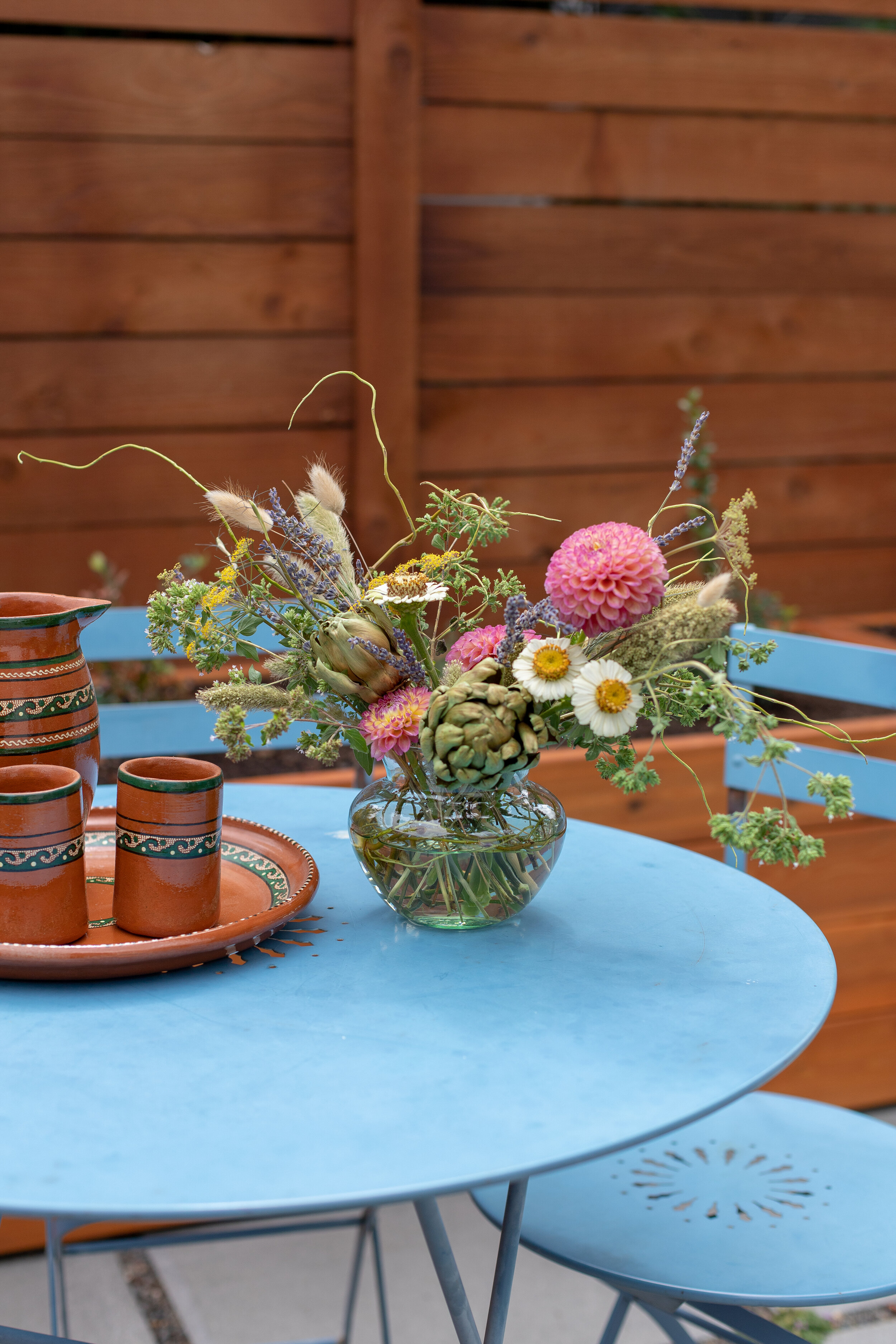
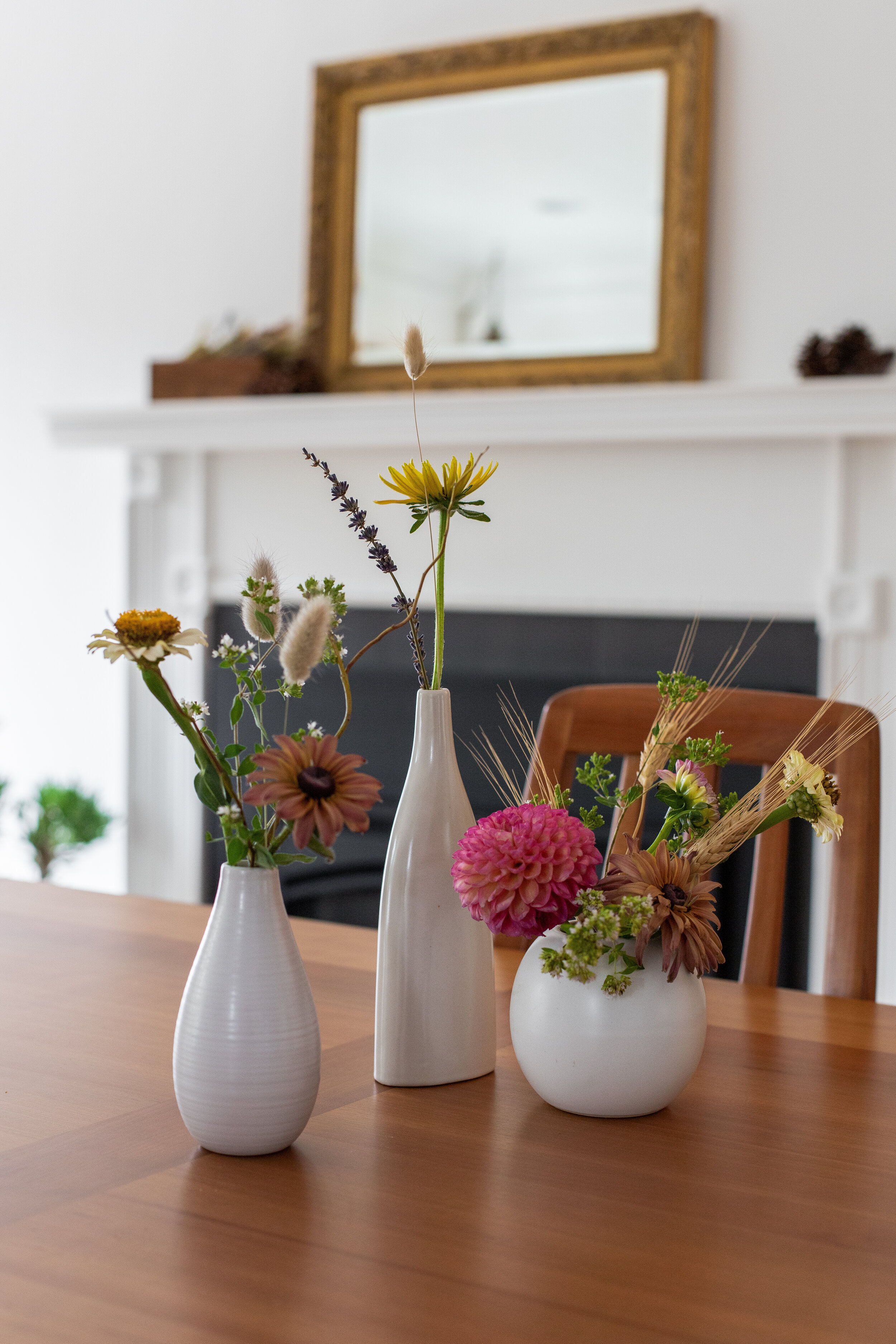

Special Considerations
When planning an arrangement several things need to be considered up front: how it will be used, for how long, and what function does it need to fulfill? The final shape, size, and ultimately the flowers themselves will be determined by the intended use of the bouquet.
Here are some questions to consider before starting:
Purpose: Will this bouquet be used as decor, a gift, or for a special event? Will it be placed in a vase, used in a garland, or carried some other way? How long does it need to last? Are there storage, container, or transportation constraints?
Placement: Where will the final piece be designed to go, and from what perspective will it be viewed? Does it need to look good from all angles, or just one? Will it stay in one place or be at risk of disturbance? From what distance will it be viewed?
Shape: Will a round display fit best in the space, or a long and narrow shape? Does it need to be smaller or larger? Should the final arrangement be softer or more structured?
Height: How tall does the arrangement need to be? Does it need to block something, or should it be low enough to see over? Will it be placed directly on the table, or elevated on a display mount?
Vase: Will the container work in harmony with the goals above? Will it be opaque or see-through? How wide or narrow is the mouth? Ultimately, the vase will be one of the first considerations as it will determine many of the aesthetic outcomes of the piece.
Choosing a Vase
The container will affect the final shape and height of the arrangement and will dictate the materials used to construct and anchor the bouquet. If the vase is clear, then it will be ideal to use materials that are both attractive and functional, such as rocks or curly willow, since they will be visible. If the container is opaque, then use of purely functional tools like chicken wire, floral foam, or a flower frog would help to hold the floral elements in place. However, flower frogs are also an aesthetic unto themselves, with the revival of vintage items, so displaying this kitschy tool in a glass vase is not absolutely taboo.
If your goal is to build a drapey and organic looking arrangement, choose a wider-mouthed vase or container, if you’re building something with desired height, reach for a taller, narrower container. If using dried flora only, water is not a consideration when choosing a container, and therefore non-water-tight options are available—think wooden boxes or baskets. Then, use the color of the vase or container to complement, emphasize, or accent the palette of your florals.
Choosing a Color Palette
After determining whether to go fresh or dried and choosing a container, it is time to settle on a preferred color palette and overall texture for your arrangement. Shopping for flora can quickly become overwhelming, in part due to the sheer number of varieties available, so going in prepared will help mitigate any potential analysis paralysis.
The color palette should be determined only once the style is decided. Does the occasion call for a uniform or monochromatic look? Or would it be better to highlight a specific color and use neutrals to make it pop? What about highlighting an entire palette equally? Some basic knowledge on color theory or taking the time to play with a free app like coolors.co can help visualize how different colors will come together and assist in the process.
Building the Bouquet
Once all the details are finalized, it’s time to acquire the flowers, grasses, and greenery that will be used. Try to use at least three different blooms or stalks for variety in shape and size, but don’t be afraid to use even more depending on the preferred style. Using more than one of each stem will give it a cohesive style and add a professional touch.
Here is how to arrange a bouquet like a pro:
Add water if creating a bouquet that contains fresh elements before adding flora to the vase, even if you are also using dried materials. If you’re only using dried materials, you can skip the liquid.
Determine what will be used to anchor the arrangement, and place it in the bottom of the vase. If using large dried pods or fresh blooms, you may need more weight or structure. In the example below, one stem of fresh curly willow, roughly 18in long, is twisted into the vase to provide structure for the arrangement.
Starting with foliage, place dried or fresh stems and other greenery directly in the vase. Trim pieces as needed to accommodate desired height. This will be the “base” of the arrangement.
After establishing the general shape, fill in the rest of the arrangement with larger flowers or other elements meant to be focal points, such as lotus pods or dried pomegranates.
Do one final pass and insert more foliage or blooms as needed to add final fullness to the bouquet, and hide any visible mechanics of the arrangement like floral foam that may be showing.
Arrangement Care:
For dried flowers, grains, and pods, make sure to keep them out of sunlight and away from moisture. Sunlight will fade their colors, and moisture can cause them to wilt. Keep in mind dried flowers are somewhat delicate, so dust them gently, but regularly.
For fresh arrangements, change water regularly and keep them away from heat, light, or drafts, as these will all lead to faster wilting. If for a special event or gift, consider refrigerating your bouquet overnight, or keep it in a cool space when not displayed.
With these tips, you will be well on your way to creating beautiful floral arrangements that your friends and family will envy in your home, but cherish when received. Whether floral arranging becomes a lifelong hobby, a fun weekend project, or an investment in your interior space, the possibilities are endless to enjoy professional results with a DIY attitude.
